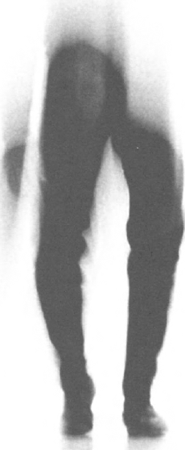Vooys. Jaargang 26
(2008)– [tijdschrift] Vooys–
[pagina 94]
| |||
Off the shelf! Kiene Brillenburg Wurth
| |||
[pagina 95]
| |||
During the film all these devices constitute a dynamic of what José van Dijck has called ‘personal cultural memory’: a mnemonic dimension that straddles (and problematizes) the borders between autobiographical and shared memory, the individual and the public. Personal cultural memory thus refers to ‘[p]ersonal collections of mediated contents’, which ‘can be regarded as cultural acts and products of remembering, in which individuals engage to make sense of their lives’. (Van Dijck 2004: 261) In this sense, personal memory always already participates in cultural or shared memory, in so far as - in a Foucauldian perspective of things - it feeds off shared modes and networks of mediation, as well as the discursive conventions enabling and sustaining the latter. This raises the issue of to what extent one's own memories are often vicarious. This is an issue that crazy foregrounds by investigating how music mediates the past by way of the present: it shows the ‘work of memory’ on screen as triggered and indeed constituted by sonic mediations that pervade past-times deferred as they are instated within the hearings of the present. In a way comparable to Claude Lanzmann's shoa (1985), crazy revolves around the past by way of the present, even though its use of archive material might suggest otherwise. I would propose, however, that precisely this use of archive footage, photographs, postcards, and musical fragments in crazy enables us to witness the production of memory as a mediated compilation: the past is constantly juxtaposed to the present, as if the former were an effect of the latter. In turn, however, this juxtaposition also serves another end in the film: it is to visually and aurally capture a contrast between - as the film's ‘hidden ideology’ constantly suggests - innocence and innocence lost; between enthusiasm and bitterness as transition points in a process of growing up. As Ron de Vos, who served in Lebanon, puts it: ‘Slowly... our youthful innocence was being demolished’ and: ‘in our world nothing remained of the past, nothing at all.’ And then we hear ‘Always on My Mind’ (1972) by Elvis Presley as we see pictures of Ron in Lebanon, the music becoming a soundtrack to the visual material, as if it had triggered involuntary memories of an intruding presence. This is, indeed, what makes the role of music so interesting in this film: the ways in which it projects presence - felt and bounded presence. Thus, Vincent Wolf, serving in Cambodia in 1992-93, notes at the beginning of the film how the tenor aria ‘Nessun Dorma’ from Puccini's Turandot (1926) gave him ‘lots of support’ back then and how it still injects him back into the past, ‘no matter what’.Ga naar voetnoot2 We witness him as a witness: we see his face in a long close-up as he listens to the world-famous recording of the ‘three tenors’ (this was two years after the world cup in Italy) and relives his painful memories, we see the way he looks, breathes, closes his eyes for a moment and sighs after the music stops, as if it has made him go through a passage; as if it had momentarily (and literally) ‘realized’ his memories in a space of experience. Sound, as Steve Connor has put it, is all-pervasive in so far as it ‘can not only impregnate, irradiate, [but]...also... provide a haven or habitat: “safe” as the saying is “and sound”.’ Sound, Connor continues, is ‘voluminous’, which is why it easily allows us to imagine it as projecting a habitable space, or even as triggering the presence of a lost space. (Connor 2003) In this respect, it is significant that none of the soldiers has selected instrumental music - it is always vocal (an aria, a duet, ballads, protest songs). Thus it is not just the | |||
[pagina 96]
| |||
musical sound, but also the voice and the words that matter in the soothing and safeguarding ‘presentification’ music is here seen to enact: the temporal and spatial immediacy effectuated by sonic ‘surround’ is also informed by the sensation of being addressed. While the soldiers are being addressed by the music, they also distance themselves from the action of combat. crazy shows how sounds and music provide a temporary cover that provokes a detached form of perception. Music, too, is part of ‘no touch’ warfare, even though the occasional and provisional untouchable spaces it projects are often right in the middle of physical combat. In this light, the almost hypnotic effect of organized sounds in crazy opens up ways to critically rethink virtual reality as a sonorous space within the boundaries of the real. | |||
References
| |||
[pagina 97]
| |||
 |
|

